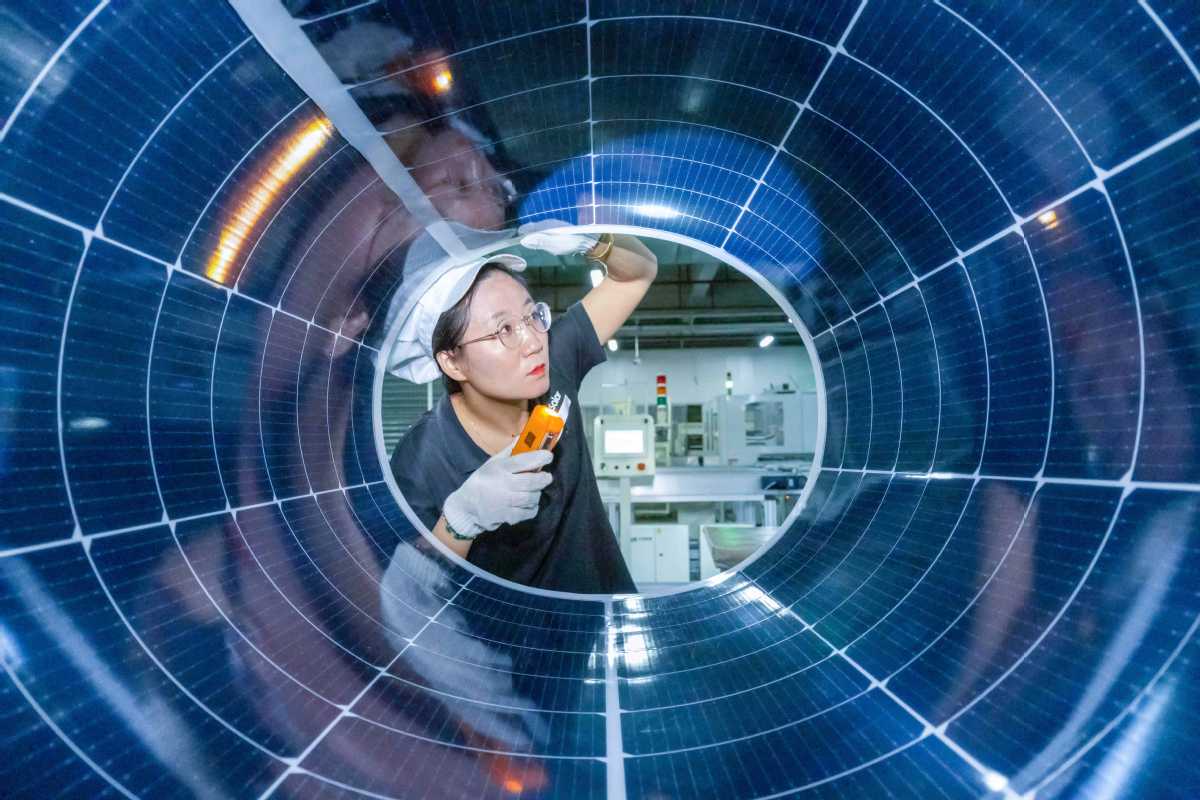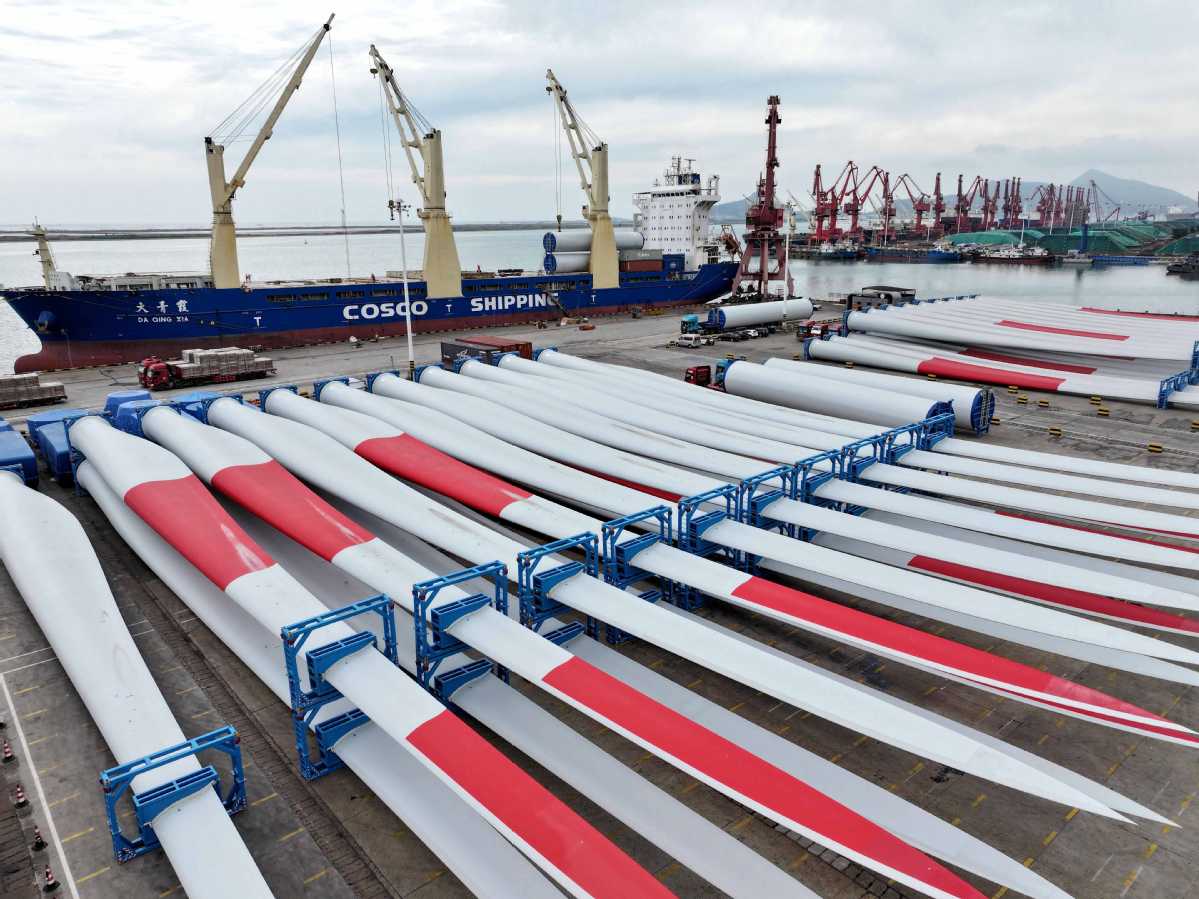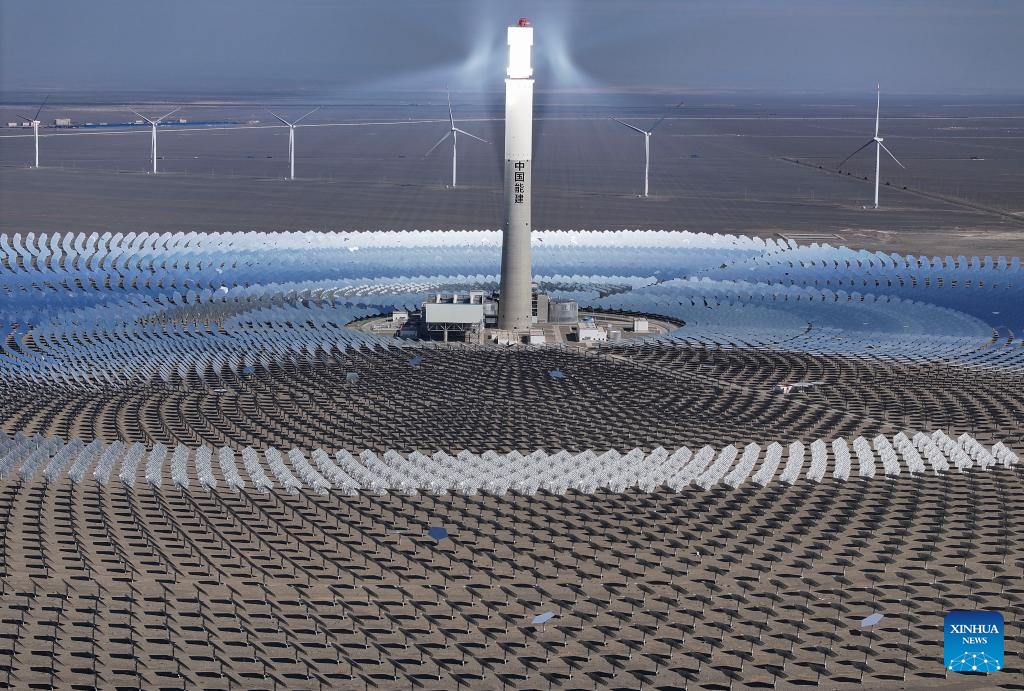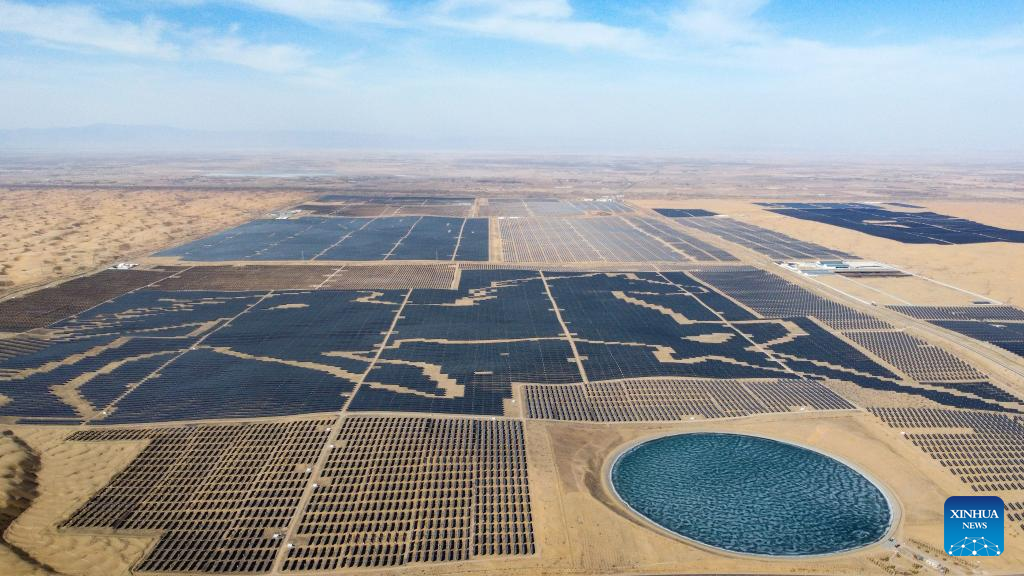
China's advanced new energy technology and well-developed industrial chain have played a key role in supporting the global shift toward green and low-carbon energy, said industry experts and company executives.
China has made significant progress in enhancing its new energy technology, including the record conversion efficiency of high-efficiency crystalline silicon and the world's largest capacity of offshore wind turbines, which has significantly contributed to reducing costs and facilitated the world's green energy transition, they say.
ALSO READ: White paper: China world's largest investor in energy transition
"China has developed a complete wind and photovoltaic industry chain, from research and development to design and integrated manufacturing systems," said Zhang Mianrong, chairman of the Energy Development Research Institute under the China Southern Power Grid Co Ltd.
"Over the past decade, global wind and solar power costs have decreased by 60 to 80 percent, with China contributing the majority of this reduction," Zhang said during the 2024 Tongzhou Global Development Forum held in Beijing on Oct 19.

"As the global leader in renewables development, China has been engaged in new energy and hydropower-related cooperation with over 100 countries and regions to meet local demand. Last year alone, the country saw its exports of wind and photovoltaic products help other countries reduce carbon emissions by 810 million metric tons."
China has made significant strides in recent years in advancing renewable energy technologies from wind power capacity to solar cell efficiency, emerging as a global leader in the field, he added.
READ MORE: Offshore breezes prove windfall for fisheries
An international team led by scientists from the Institute of Chemistry under the Chinese Academy of Sciences recently developed a new type of high-efficiency solar cell capable of achieving a photoelectric conversion efficiency of 26.4 percent, the highest efficiency for such solar cells to date.
Compared with the current widely used crystalline silicon solar cells, perovskite-organic tandem solar cells offer advantages such as ease of preparation, lightness and the ability to be fabricated into flexible devices. They also present wide application prospects in areas from portable energy to building-integrated photovoltaics, said Li Yongfang, an academician and a researcher at the institute, who is involved with the development.

On the other hand, the world's most powerful floating offshore wind turbine, independently developed by China with a generating capacity of 20 megawatts, recently rolled off the production line in Yancheng, East China's Jiangsu province. It features a wind wheel with a diameter of 260 meters and a swept area of 53,100 square meters, and can generate 62 million kilowatt-hours of electricity annually, enough to power about 37,000 households, saving 25,000 tons of coal while cutting carbon dioxide emissions by 62,000 tons.
Through these advancements, China is transforming its energy landscape while further cementing its position as the global leader in renewables development, with new energy installed capacity expanding at a rapid pace in recent years, which in turn becomes a driving force for green and low-carbon energy transition, said Zhang.
READ MORE: Sustainable energy landscape takes shape
The country saw its wind and photovoltaic installed capacity surpass coal power in June, reaching 1.18 billion kW. The figure exceeded 1.2 billion kW in July, hitting the target set for 2030 six years ahead of schedule and further rising to 1.27 billion kW in August, thus rendering new energy the dominant source of power nationwide.
Zhang expects that China's annual newly added wind and photovoltaic capacity will exceed 100 million kW each year, with 70 percent of energy consumption to come from non-fossil sources by 2030.

Wind and photovoltaic installed capacity will exceed 5 billion kW by 2060, with most power supply coming from new energy sources, he added.
Despite these achievements, the development process also faces many challenges, as renewable energy's intermittent drawbacks pose a challenge to providing China's medium-to-high-speed growth with a stable power supply, he said.
READ MORE: Report: Power demand to rise faster in China
Last year, the installed capacity of new energy grew by over 30 percent, but it only accounted for 15 percent of the nation's total power supply. Wind and solar power, unlike coal-fired electricity, face obstacles in taking on a dominant role at present, he said.
"Currently, the rapid and massive growth of new energy comes with intermittency and volatility, requiring the power grid to have high regulatory and energy storage capabilities."
Huang Shaozhong, a scholar at the China Energy Research Society, said power demand is expected to rigidly increase going forward, with annual demand expected to grow by 800 billion kWh during the 15th Five-Year Plan period (2026-30).

Some academicians predict that by 2060, China's total power demand could reach 20 to 21 trillion kWh, making sufficient power supply even more challenging, especially since energy storage is not yet fully capable of handling the required load and coal power still accounts for a large proportion in many regions, he said.
Zhang added that China currently faces uneven distribution of load and resources, as well as increasing pressure on grid integration and consumption, as approximately 80 percent of wind and 90 percent of solar resources are located in western and northern regions, 1,000 to 2,000 kilometers away from coastal areas where most electricity is consumed.
READ MORE: China makes leaps with floating wave energy
Despite the relatively low operating costs, renewable energy prices delivered to consumers are far higher than coal power when transportation costs are factored in, making solutions like energy storage, regulatory power sources, trading of green certificates and new energy consumption quotas necessary, he said.
Zhang suggested accelerating the cultivation of new energy sectors such as electric vehicles, energy storage and hydrogen production as these modalities can consume excess electricity to avoid waste of renewable power.

He also emphasized strengthening international cooperation in the new energy sector, promoting interconnectivity of power infrastructure with neighboring countries, deepening global green cooperation, facilitating the deployment of wind, solar and smart energy projects, and fostering a win-win global energy development framework.
According to Song Feng, director of the department of energy economics at the School of Applied Economics under Renmin University of China, the nation's energy sector has already seen cooperation and investment through initiatives like the Belt and Road Initiative, showcasing China's competitive advantages in systemic strength.
READ MORE: China marks key step in offshore wind power
Song recommended leveraging China's massive market to drive industrial innovation and fully utilizing the country's systemic competitiveness and the combined advantages of its industrial chain.
She added that digitization and intelligent technologies are already modernizing traditional energy sources. The digitization of thermal power generation and the power grid, for example, plays a crucial role in efficiently managing and dispatching electricity in the face of new energy instability.
Contact the writer at zhengxin@chinadaily.com.cn


